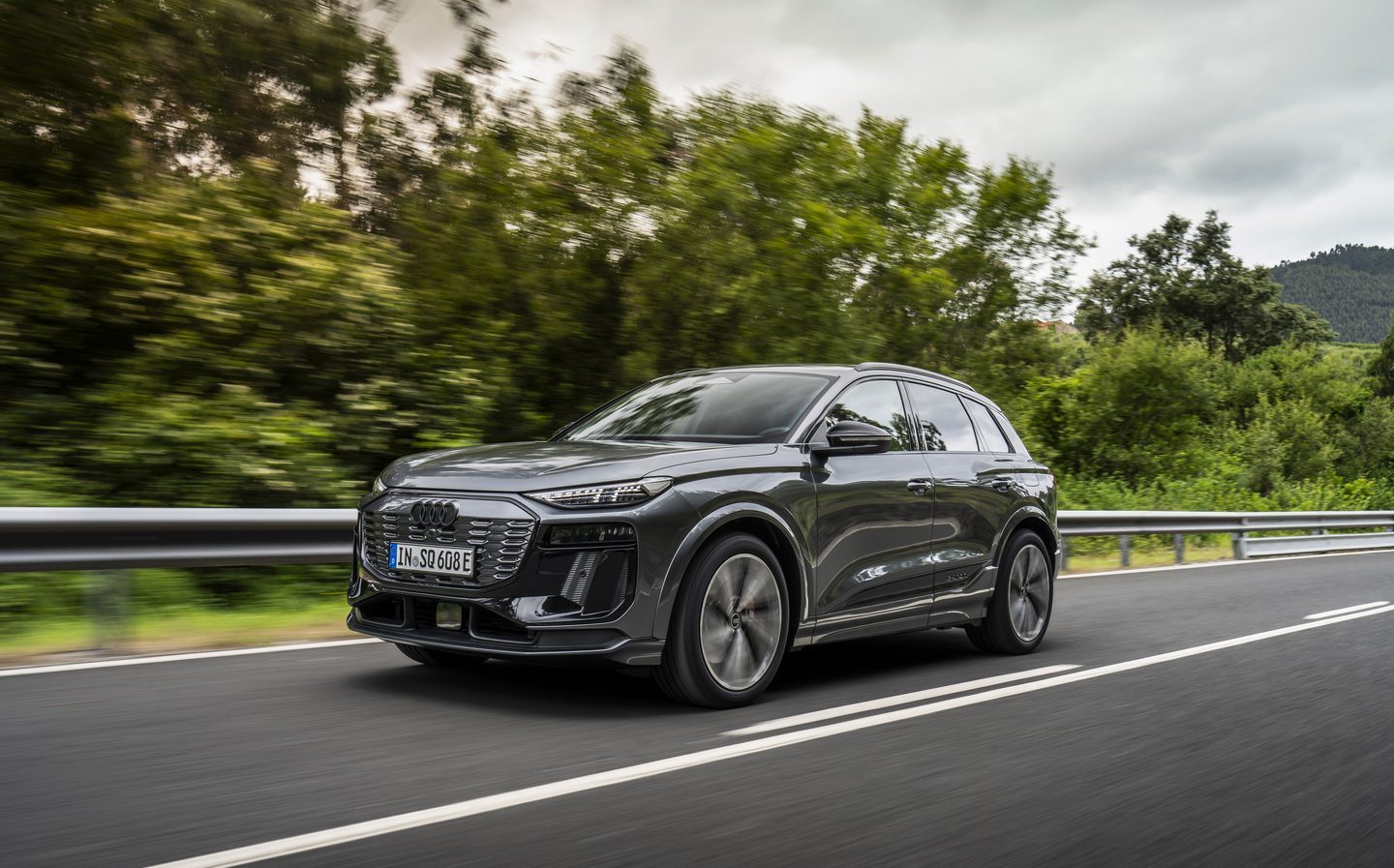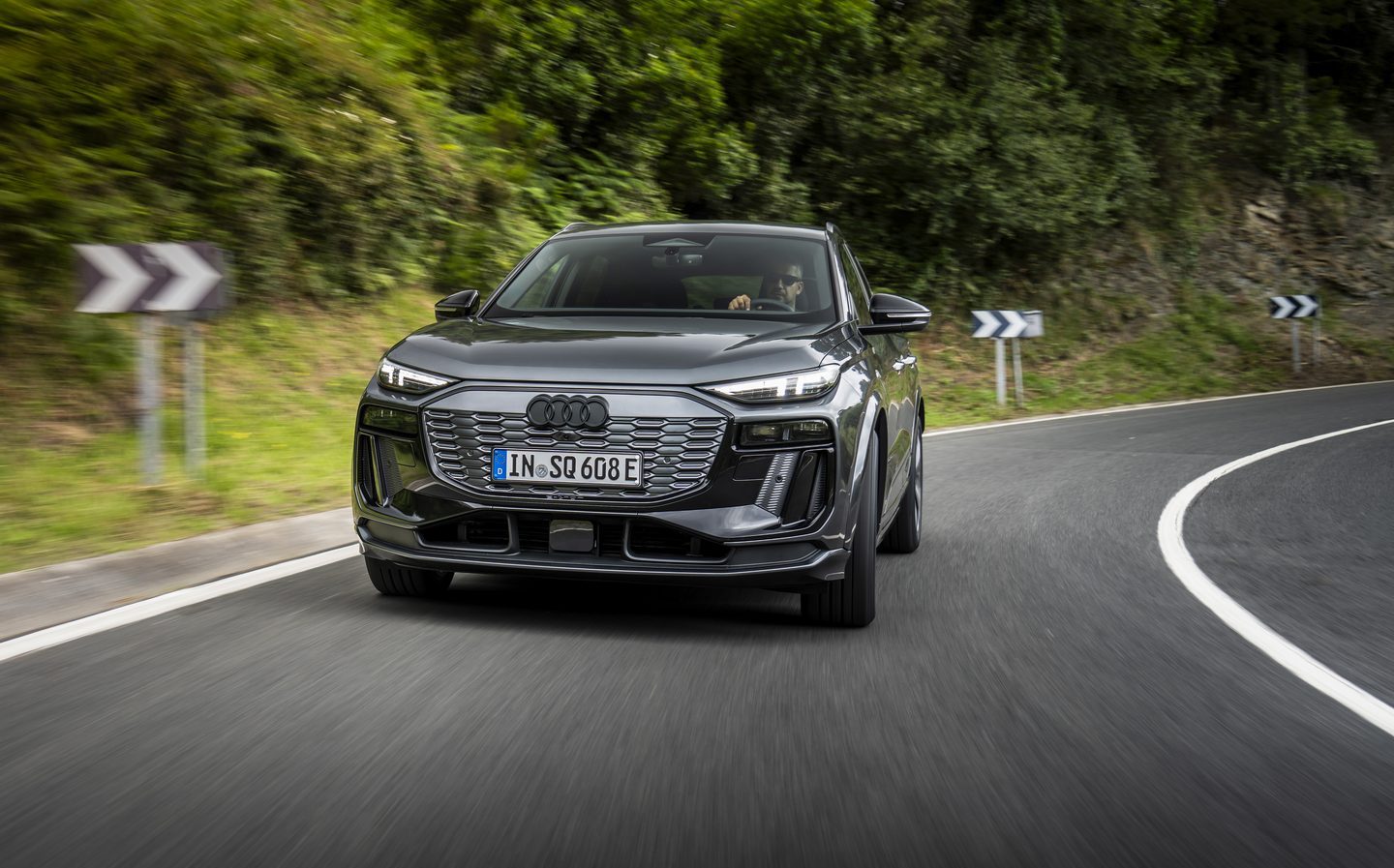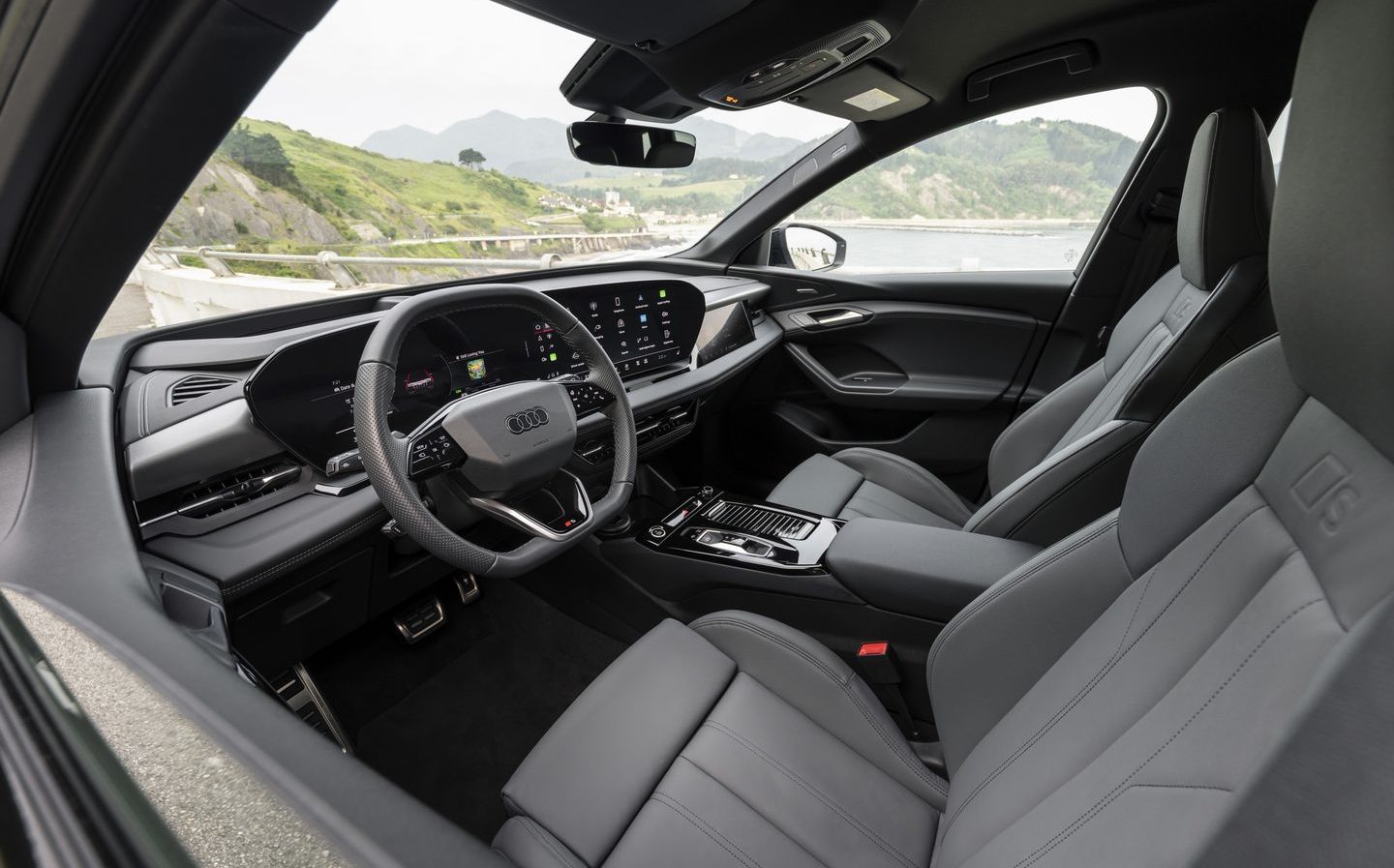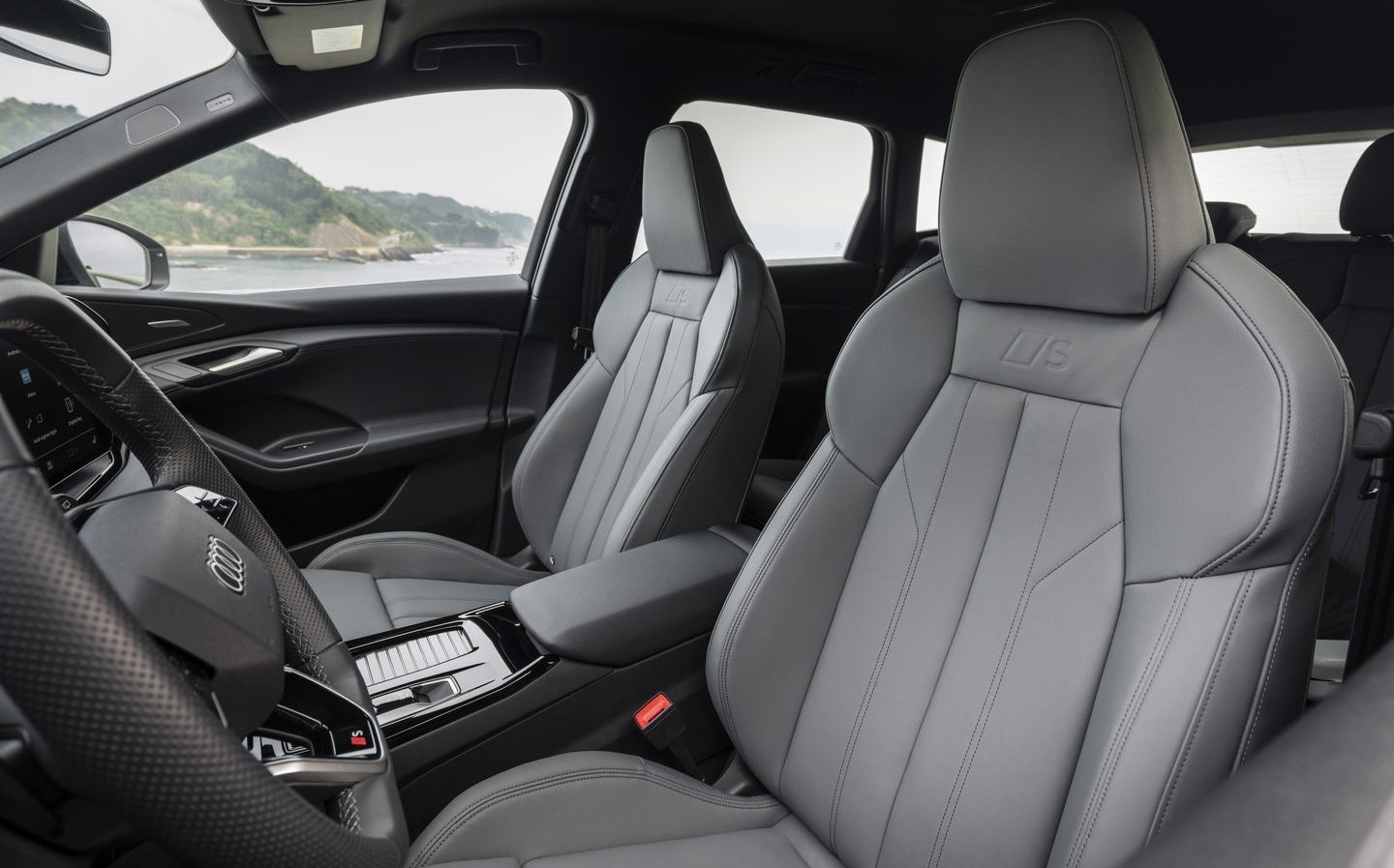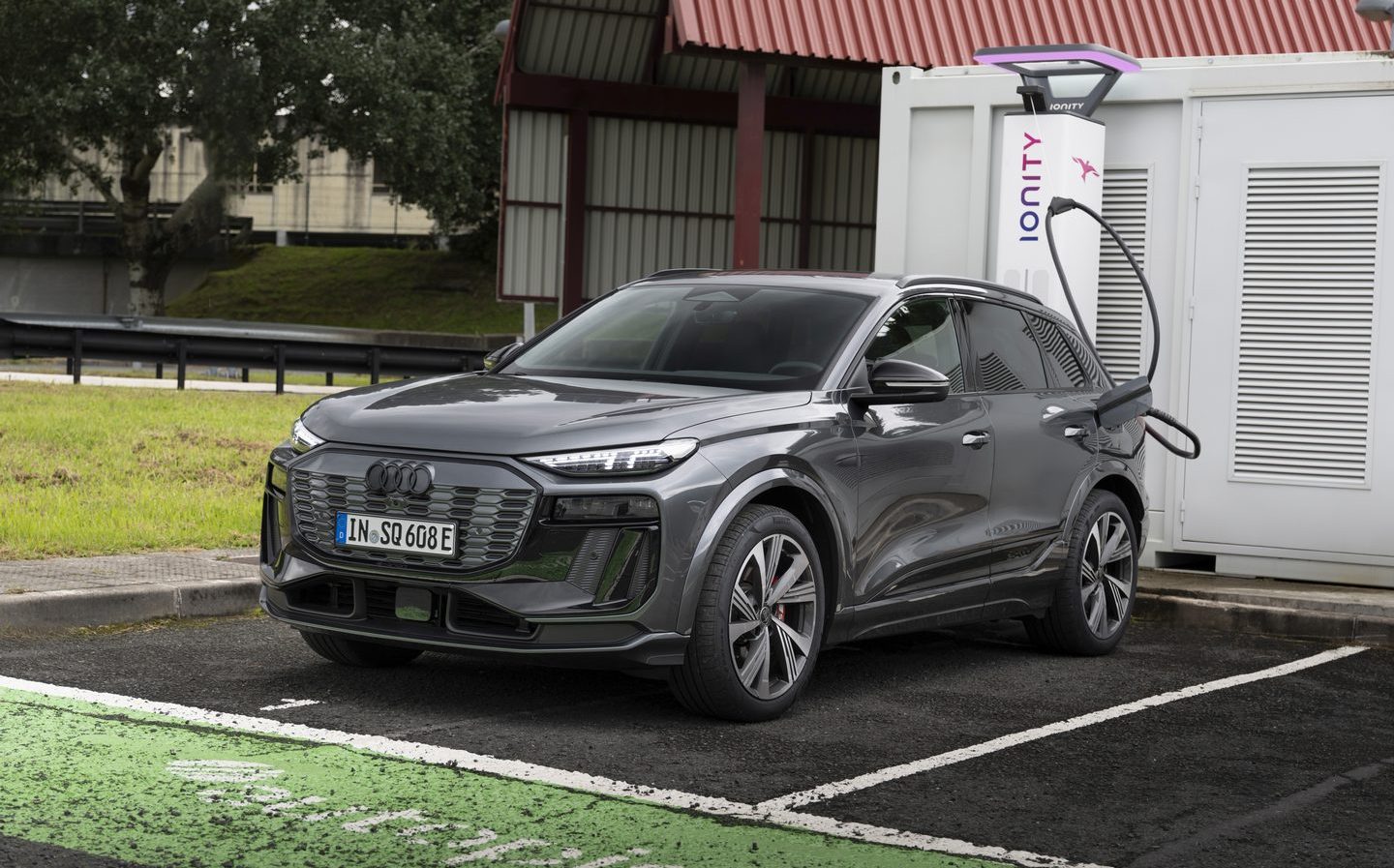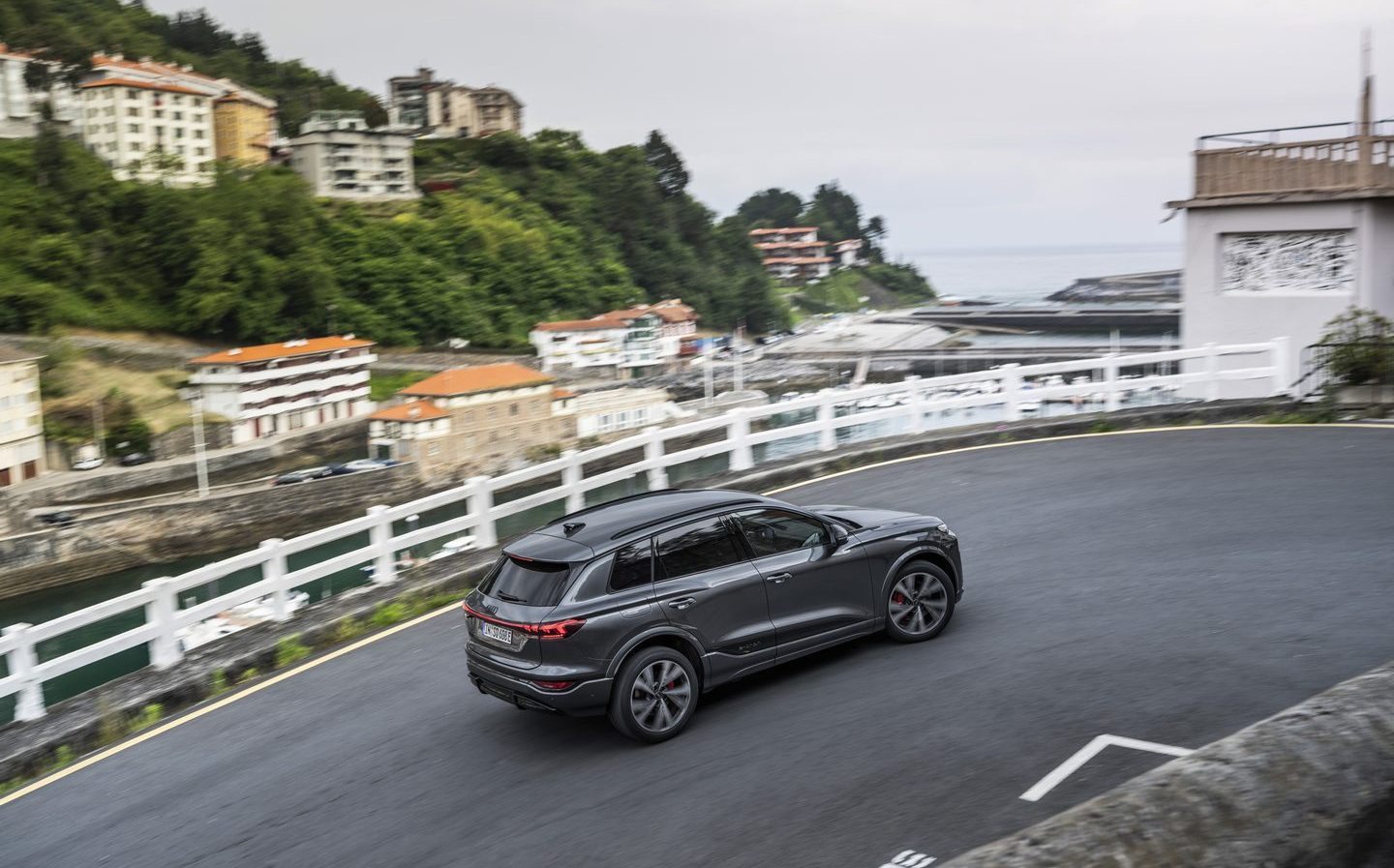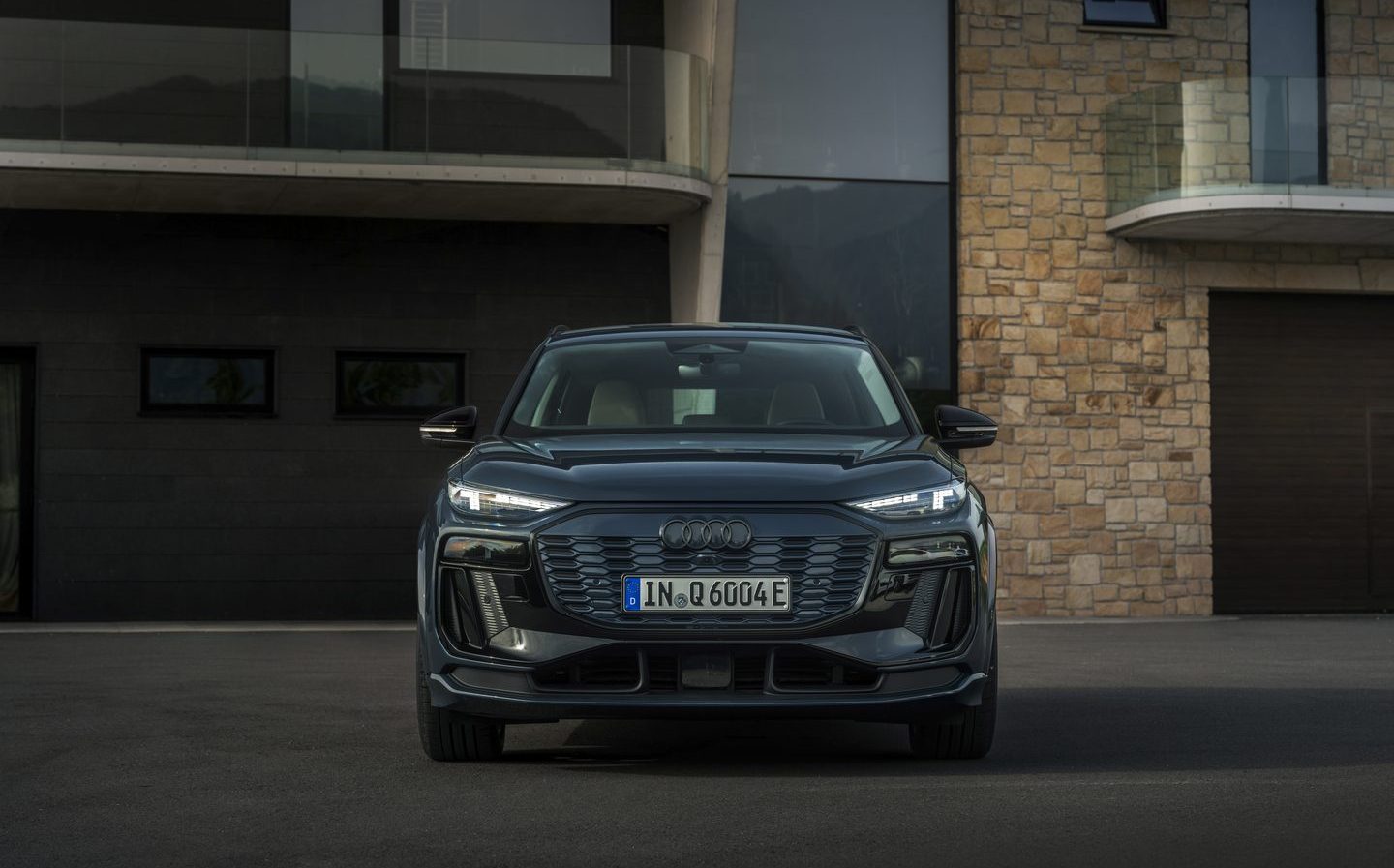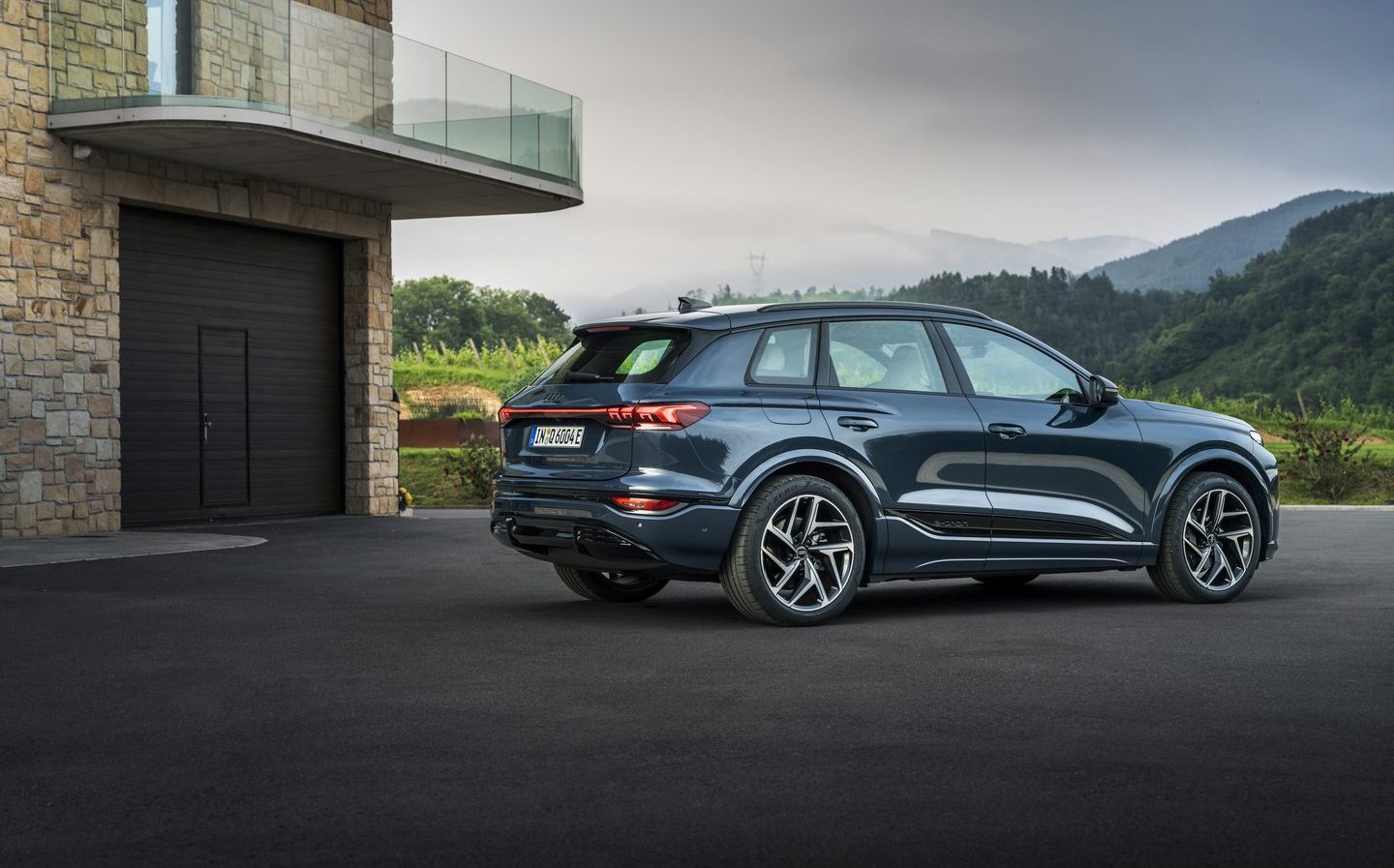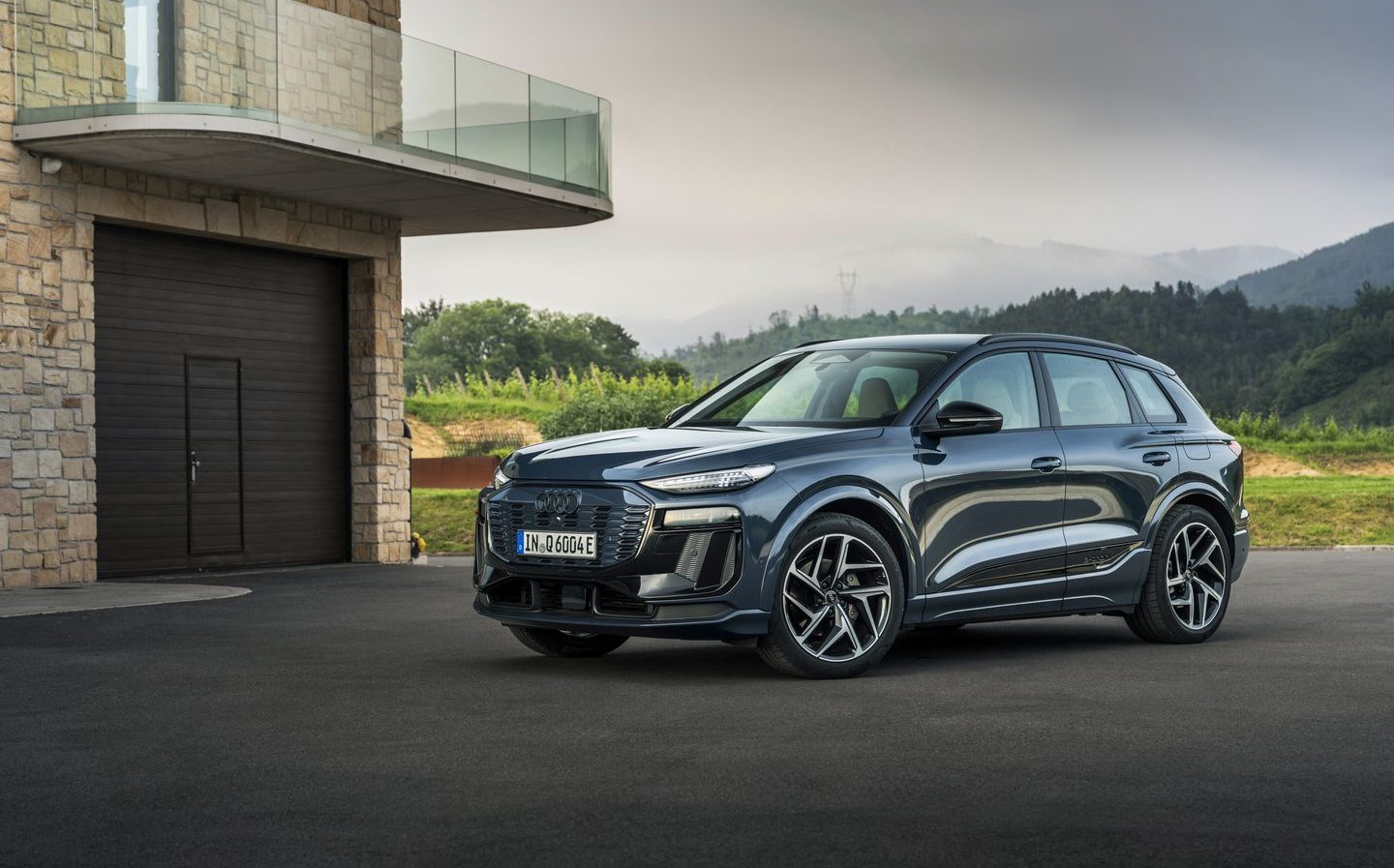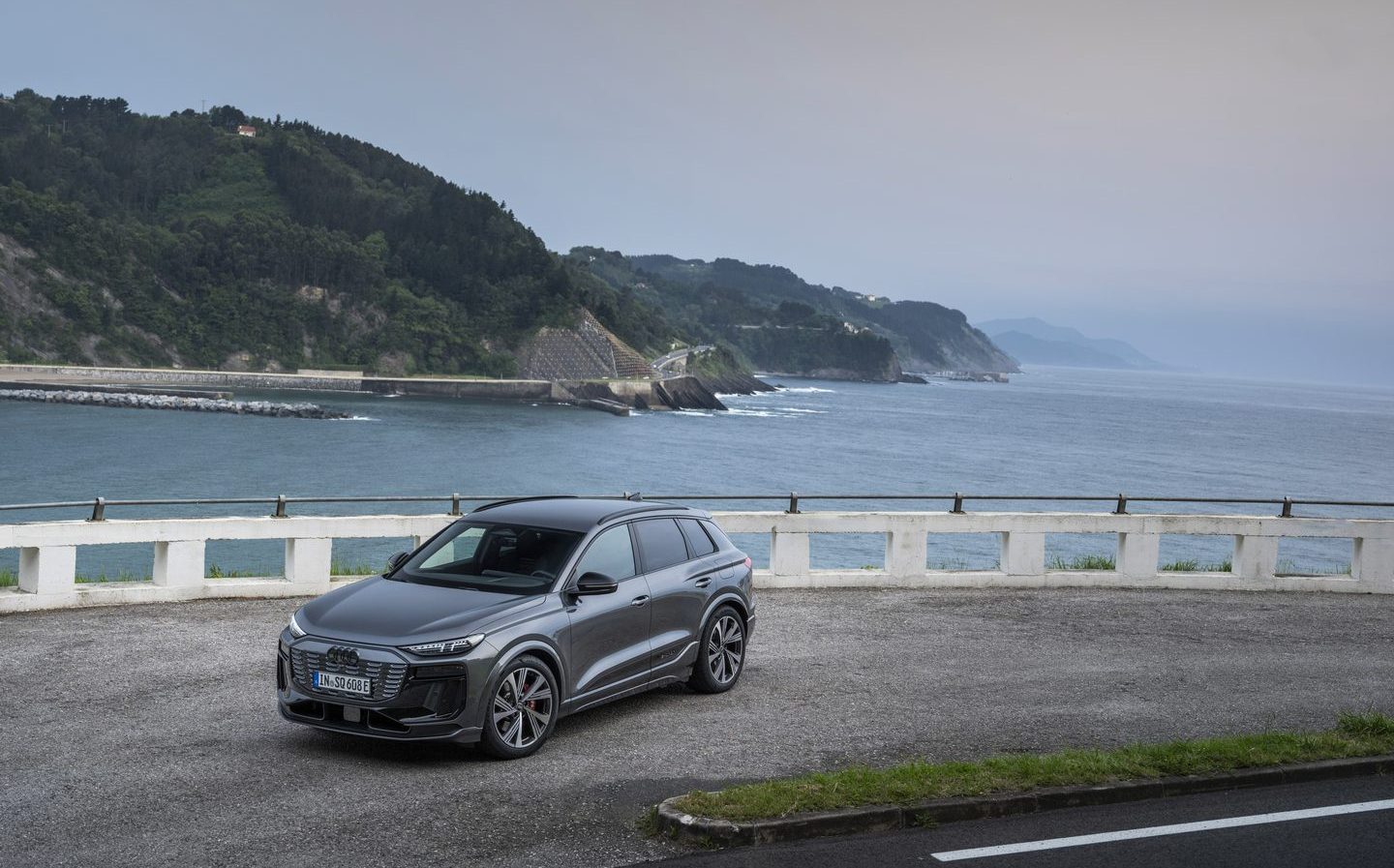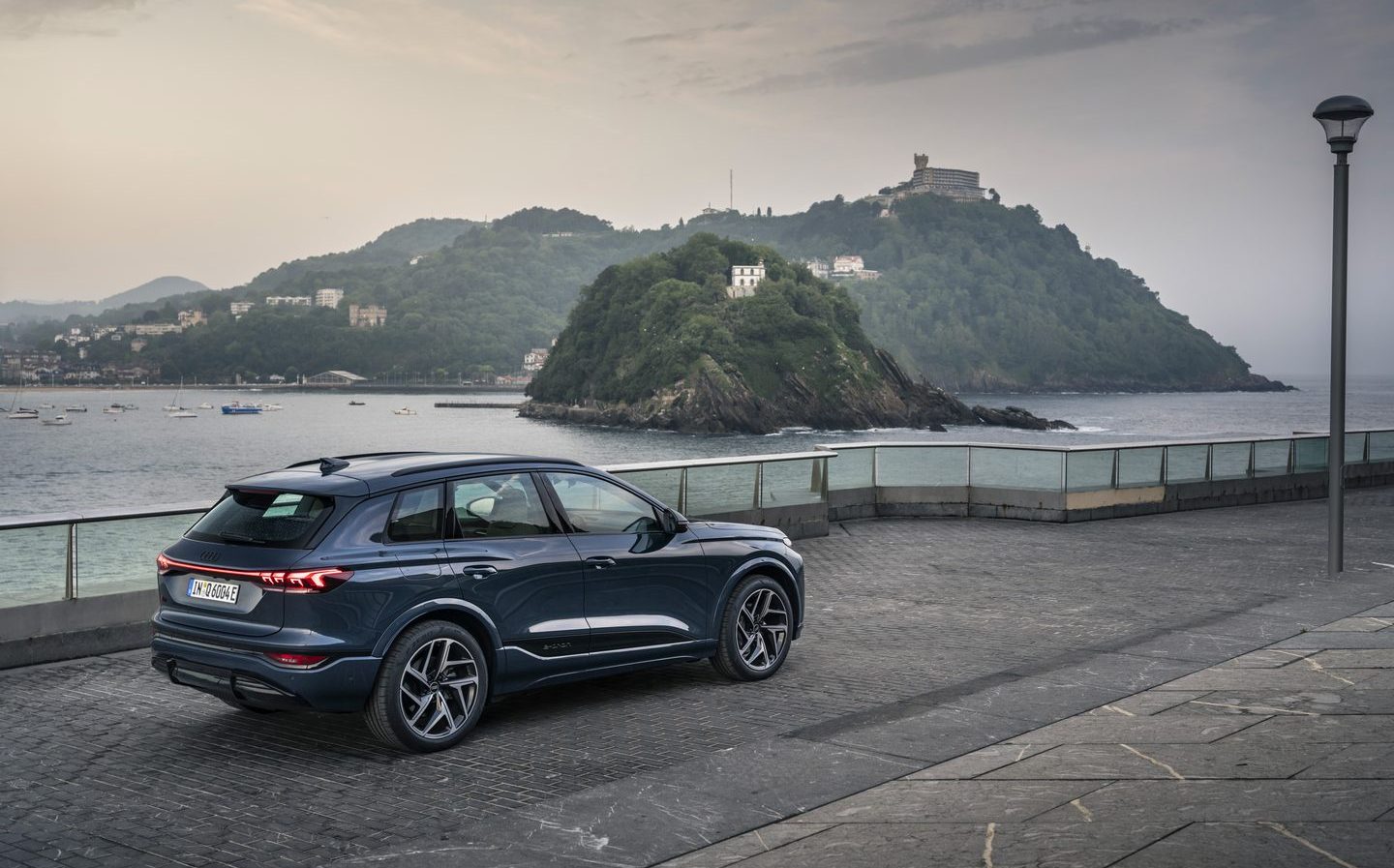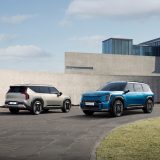Audi Q6 e-tron 2024 review: Electric SUV spearheads massive Audi new car push
First cousin of the new Porsche Macan EV
Is Audi bolstering its electric car line-up at just the wrong time? If you believe much of the online chatter, the late arrival of the new Q6 e-tron electric SUV — and the long-delayed reveal of the production version of the A6 e-tron fastback/ estate — appears to have coincided with a drop in enthusiasm for EVs across Europe and America. Indeed, Audi itself seems to be hedging its electric bets somewhat, promising a broader range of hybrid and plug-in hybrid models, and pushing back a little on promises to go all-electric by the end of the decade.
In fact, electric car sales aren’t sliding; at least not in a global sense. According to a report from the International Energy Agency, worldwide sales of new electric cars are moving ahead quite nicely and are increasing at about the same speed so far this year as they were in 2023.
In some markets — Germany and Ireland notably — EVs are seeing year-on-year sales decreases, but once you start digging into the figures the picture is more complicated.
It’s certainly true to say that Audi’s new electric models are launching when more questions are being asked about the electric revolution. At least with the Q6 e-tron, we can dispense with questions and arguments about affordability — with a cheapest price tag of £62,645, this Q6 was never going to move the dial in the direction of cheaper electric motoring.
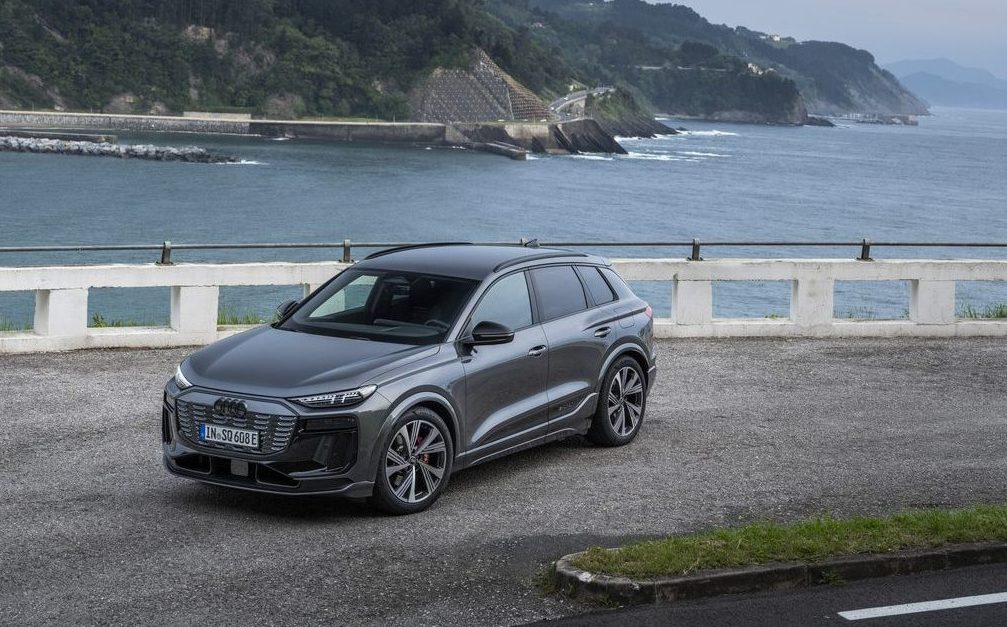
Underneath lies the cause of the Q6’s delays: the “PPE” structure around which it is built. Standing for Premium Platform Electric, and also destined to see service in various Porsches (the new Macan Electric was the first vehicle to use it) and an electric Bentley or two in the future, it was problems in creating the fearsomely complex software that held back the introduction of the Q6.
While the PPE underpinnings are impressive in their new technical specs (improved batteries, smaller and lighter electric motors) the real complexity lies in the software, which in theory makes the Q6 and other PPE-based vehicles upgradeable “over the air” for many years ahead, just like a smartphone.
Getting that software to work, though, has taken longer than expected and caused more than a few senior Audi executive heads to roll. Indeed, just recently it was announced that the Volkswagen Group was getting into business bed with American electric car startup Rivian and launching a multi-billion-pound collaboration to develop software for future vehicles. That’s quite some admission that Audi’s technik is no longer providing the requisite vorsprung.
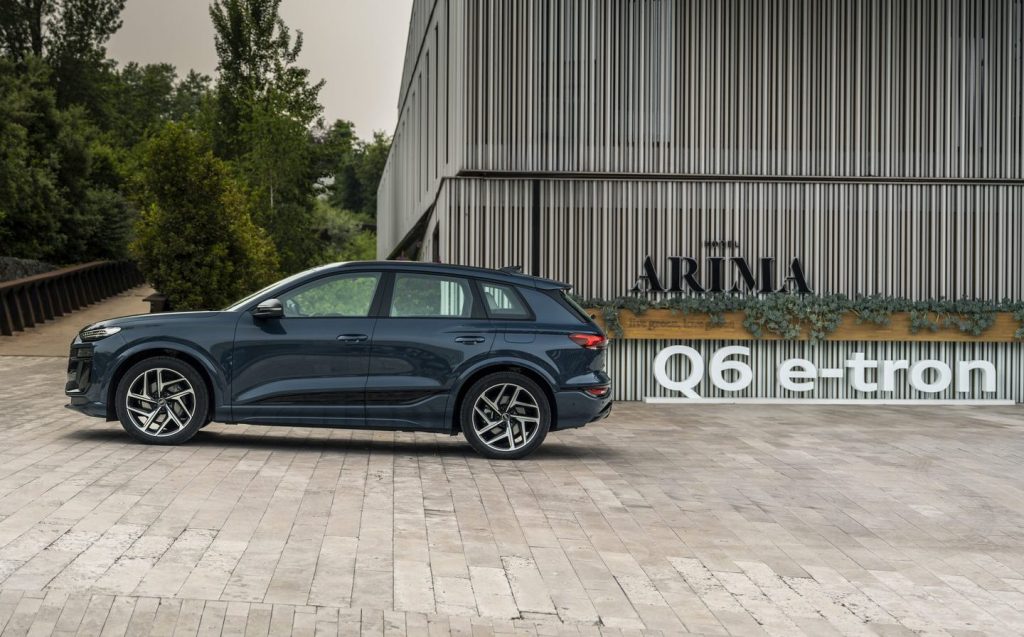
Does that render the Q6 e-tron an electric lemon? A mish-mash of half-finished software? In fact, it’s quite a pleasant electric SUV, albeit one which perhaps doesn’t seem like the gigantic leap forward that we were expecting, given the theoretical advances of its underpinnings.
On the outside, it’s very much generic Audi: big grille (though blanked off here, to improve aero), slim lights with a pixelated look that seems slightly stolen from both Volvo and Hyundai (ah, how times have changed) and although there are a few touches of styling liveliness around the wheel arches, you could easily mistake it for the existing Audi Q5 or Q8 e-tron at even reasonably close range.
In fact, so similar is the Q6 to the Q8 e-tron in terms of styling, size and cabin space that Audi is considering temporarily dropping the electric Q8 and shuttering the Brussels-based factory in which it’s made. It seems that customers are more excited by the prospect of the slightly more affordable Q6 than the ageing and compromised Q8.
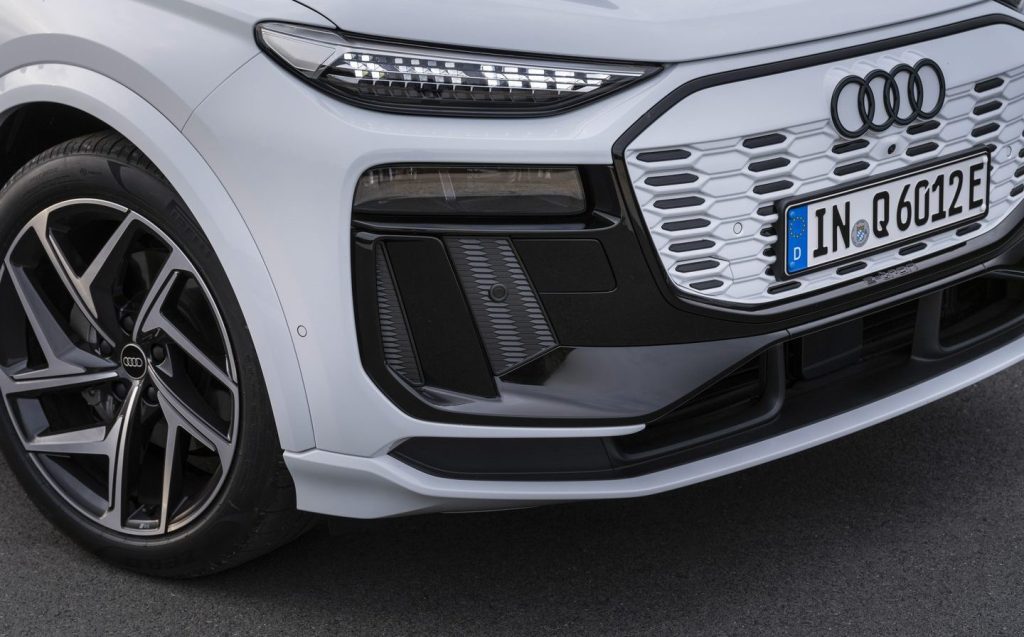
At least the cabin brings a little more to the party than the exterior. OK, so the Q6’s interior does suffer a little from that traditional sensation you get in an Audi that everything is a bit too heavy on the black and chrome to be truly welcoming, and certainly the interior is distinctly monochrome, never veering into anything more daring than a mid-grey. However, the soft-touch synthetic suede panels on the doors and dashboard soften the effect somewhat, and the big, curved display screen really makes you sit up and pay attention.
Even those massively against the proliferation of touchscreens must grudgingly admit that Audi has made a good one. There are actually three screens behind the massive curved glass — there’s the driver’s instrument panel, which is a little short of options for changing the display but works well enough; there’s the main infotainment screen; and there’s a slim section of screen between the two which is home to shortcut buttons which make operating the big screen much easier. Of proper buttons there are disappointingly few, mind you.
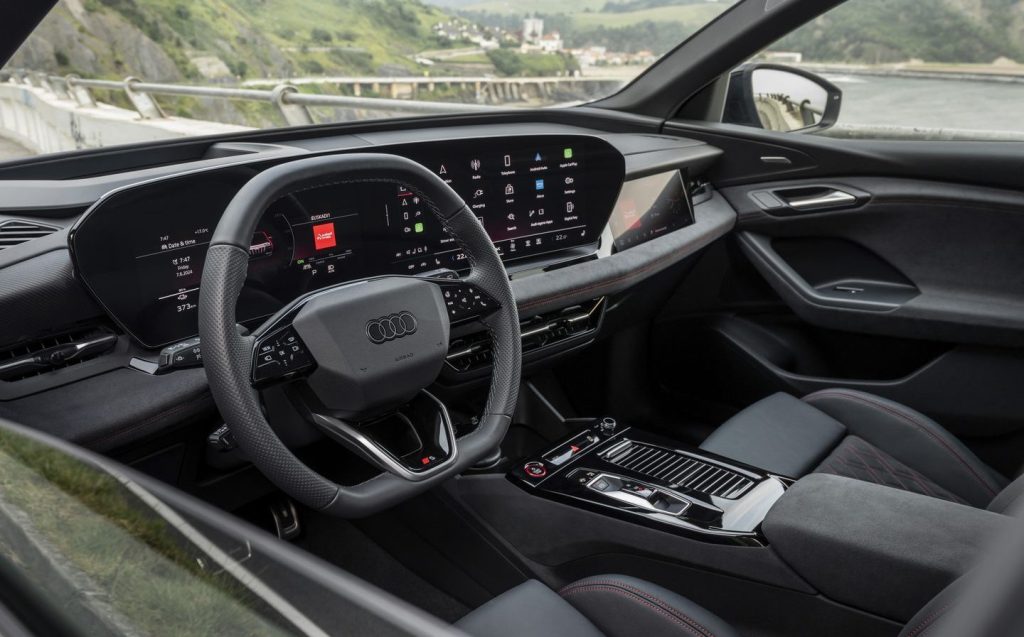
The main screen uses crisp, clear graphics and a reasonably simple menu layout. It’s still more distracting and fiddlier than it ought to be, but in the panoply of big car screens, it’s fairly good. As ever, there’s a voice control system — called Audi Assistant — which gets ChatGPT AI assistance under the skin, and as ever it’s as useless as the automated customer assistance systems at the far end of a phone line. Perhaps it’ll get smarter over time.
More usefully, there’s a massive head-up display projected onto the windscreen, which is one of the best in the business, and which can still be read even if you’re wearing polarised sunglasses (not all of them manage this). Tesla ought to take note.
Following Ferrari and Porsche, Audi has also added an optional extra screen ahead of the front seat passenger, which in spite of theoretically including a function that allows your co-pilot to help you find a parking space, seems entirely redundant as surely anyone sitting there is going to be on their phone anyway?
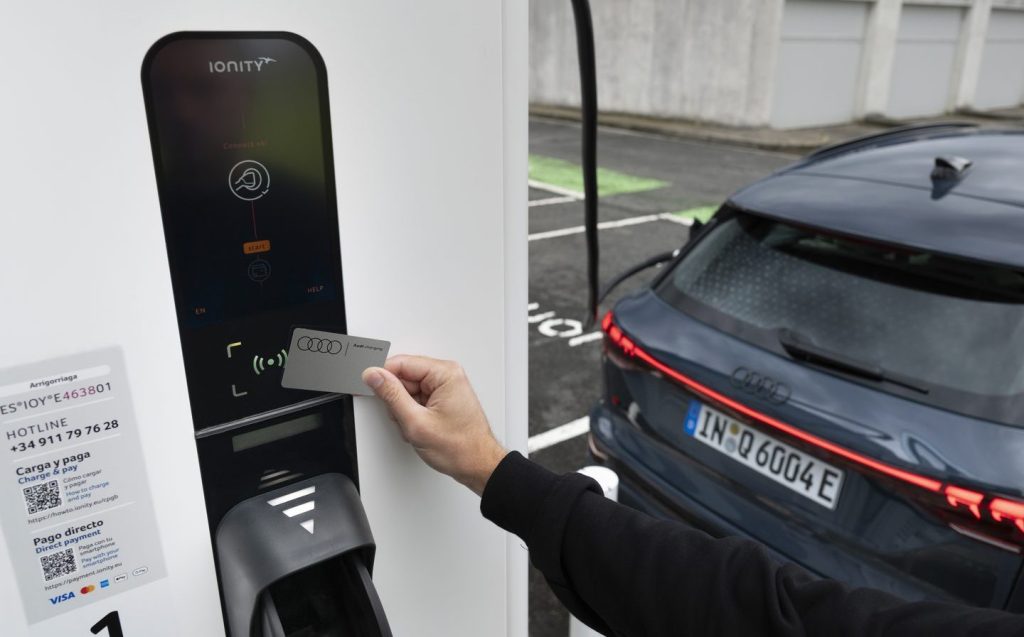
There’s more gimmickry, too. Thanks to the Oled technology Audi is using for the Q6’s front and rear lights, the driver can alter the patterns used by those lights, picking from eight choices on the touchscreen. Quite why you’d want to do this is a bit beyond us but it did at least pass a few diverting moments in a traffic jam.
As for the rest, the quality is well and truly up to Audi’s usual standards but there is a distinct lack of space. It’s not that the Q6 is cramped, but there isn’t the stretch-out room in the back seats that you might expect from a car on a brand-new, engineered-for-the-future platform.
Equally, the boot — at 526 litres — is nothing special, even if it is augmented by a front storage space under the bonnet, which is just about big enough for one charging cable.
Perhaps, then, the PPE underpinnings will start to impress once we begin digging into the performance and range. The quattro S line version under test here has all-wheel drive thanks to two electric motors, developing an impressive 381bhp. That gives a 0-62mph sprint time of 5.9 seconds, which is not bad for a car weighing a rotund 2,325kg at the kerb.
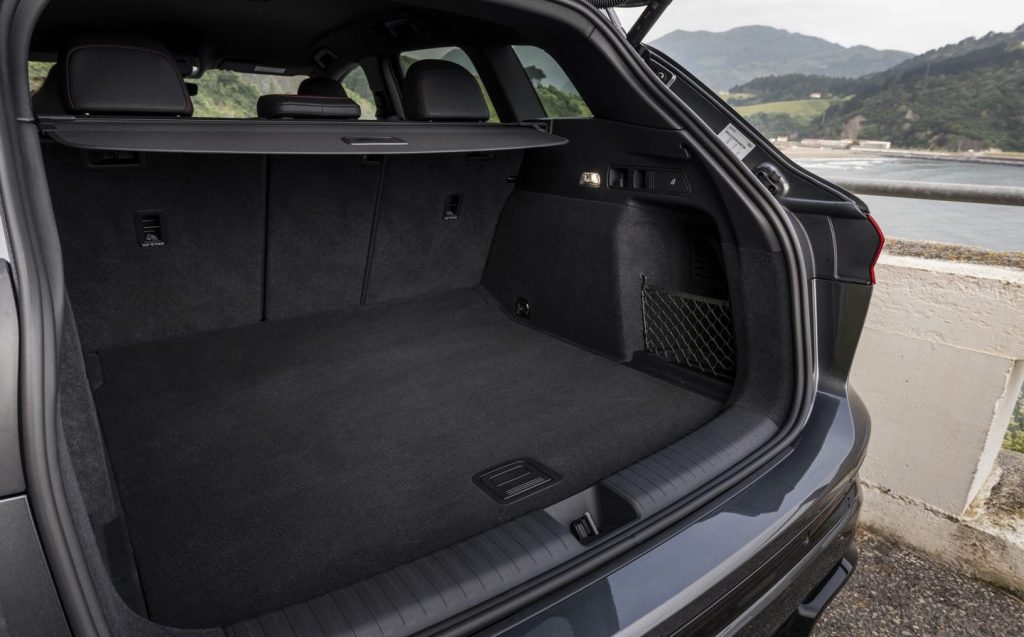
Equally, the range seems like it’s going to be impressive. With the biggest battery on board, and its energy capacity of 94.9kWh (usable), Audi quotes an official range over a mix of roads of up to 387 miles. As usual, real world ranges will be less, especially in cold weather and when driving at speed; on a full charge, the best range we were able to squeeze out of the Q6 e-tron quattro was 279 miles, though we must admit that most of the driving was on a motorway.
While that’s a reasonably useful real-world electric range, it’s still a long, long way from the one advertised so has to count as a disappointment. Hopefully the lower, sleeker A6 e-tron will do better with the same battery and motors.
The battery can be charged up ultra-rapidly, which is helpful. The Q6 e-tron uses an 800-volt charging system which means it can recharge up to 270kW at a suitable DC public charging point, assuming you can find one with that kind of power. If you can, then the Q6 can impressively recharge the battery from 10 to 80 per cent in just 21 minutes, which is about as quick as is possible right now.
Slower speed charging is done at 11kW on AC power, which is perfect for overnight top-ups at home, although eventually the Q6 will be available with brisker 22kW AC charging for use at shops, cinemas, etc.
Initially, at least, brisk is about all the Q6 feels. Stamp on the accelerator from a standing start and the Q6 kind of just seems to gather speed. It does so quickly, certainly, but that 5.9 seconds to 62mph time feels a touch more turgid at times, compared with some of the competition.
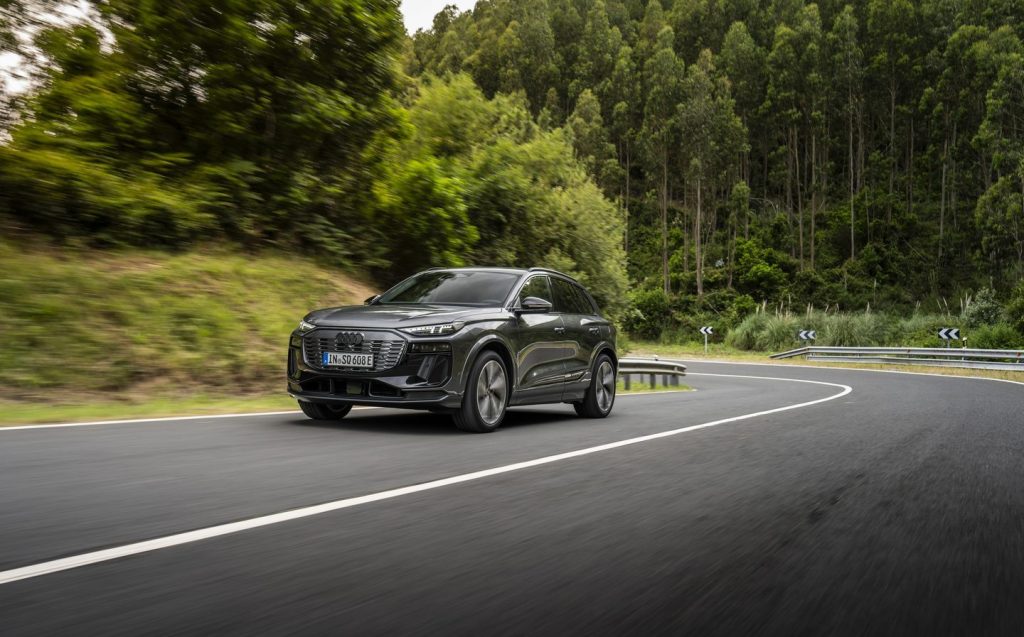
Ah, but the Q6 has saved a couple of surprises… and they’re good ones. For a start, the car’s acceleration feels far more impressive when you need to add to your cruising speed. When you’re in need of a quick blast from 50mph to 70mph, for example, then the Q6’s instant-on electric torque and hefty power output finally come into their own, and for a few seconds this big SUV feels like quite the performance car. That seems like a better balance of performance than having everything all at once from a standstill (a form of performance guaranteed to reacquaint you with your lunch).
Equally, the handling and steering take a bit of getting to know. Drive everywhere in Efficiency mode, which many EV owners will possibly naturally default to, and the Q6 feels a bit too much like a traditional Audi, and we mean that in the worst way: heavy, ponderous, too firm in its ride quality.
At low-to-medium speeds, you’re much better off switching to Comfort mode. This jacks up the air suspension a bit, giving you more in the way of a compliant ride, and also lightens up the steering, which makes the Q6 feel more agile and natural to drive around town.
All of which does seem a bit pedestrian, especially for a car that shares at least some of its genetic code with Porsche. That’s why keen drivers will want to switch to Dynamic mode.
In most petrol cars, all this does is stick the gearbox into a lower gear and add pointless weight to the steering. In the Q6 it’s worth doing, as the suspension sharpens up considerably, and so too does the steering and accelerator response. Instead of just gaining weight, it seems to have added more muscle, and suddenly the Q6 can be cornered with some verve, tricking the laws of physics into thinking — even if only momentarily — that it’s managed to shed about 300kg just before you turned the steering wheel.
However, the sheer bulk of the Q6 will have you backing off on narrow roads. It measures a full 2.1 metres across the mirrors, and the relatively low-set driving position can have you guessing rather too much about where the extremities are.
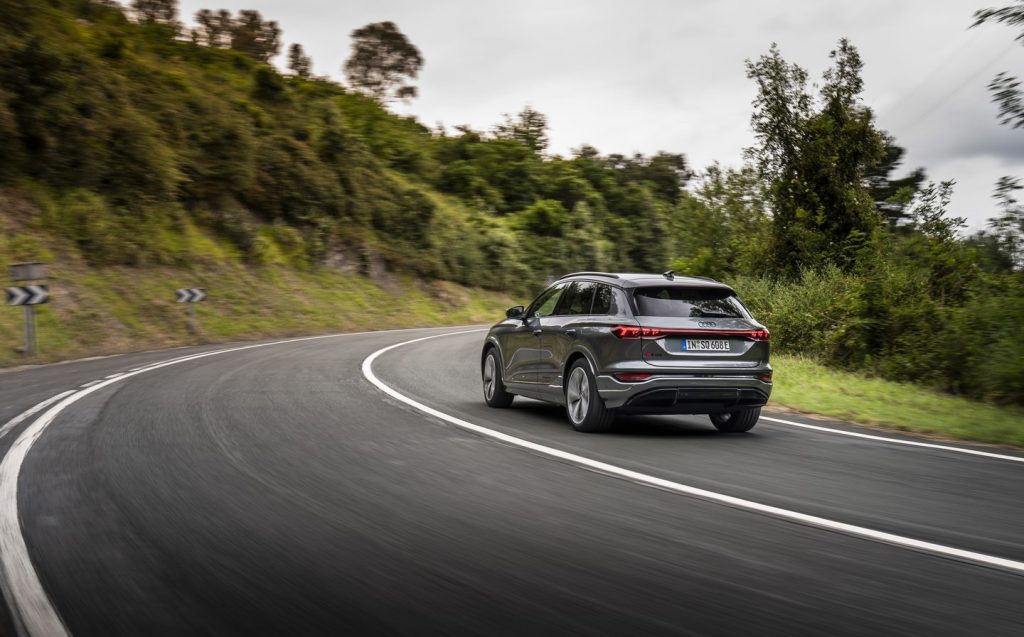
Even so, you can see why Audi might be considering shelving the ageing Q8 e-tron in favour of this more affordable Q6. They’re so closely matched in terms of overall performance and space, but the Q8 can never seem to shed that sensation of heft in the same way that the Q6 manages, while the Q8’s real-world range on one charge is even worse.
The Q6’s real world range is also frustrating but as an overall experience it’s certainly an improvement on its stablemate, and actually a car that rather grows on you over time. Which is nice, and all, but really, given the delays and the supposed advances of the new underpinnings, it should have been more of a case of instant gratification.
Related articles
- If you found our review of the Audi Q6 e-tron interesting, you may want to read our review of a prototype of the updated Audi S3
- You might also like to read our review of the BMW M3 Touring
- Have you seen the all-electric Audi A6 e-tron?
Latest articles
- F1 2025 calendar and race reports: The new Formula One season as it happens
- Seven great automotive events to visit this summer, from F1 to art and champagne
- Watch new Porsche 911 GT3 smash Nürburgring record for manual cars
- Skoda Elroq 2025 review: Czech carmaker can’t seem to miss with its electric family cars
- Five best electric cars to buy in 2025
- Should I buy a diesel car in 2025?
- Zeekr 7X AWD 2025 review: A fast, spacious and high tech premium SUV — but someone call the chassis chief
- Denza Z9GT 2025 review: Flawed but sleek 1,062bhp shooting brake from BYD’s luxury arm
- Extended test: 2024 Renault Scenic E-Tech review


